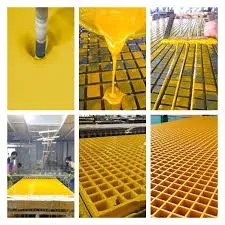
-
 Afrikaans
Afrikaans -
 Albanian
Albanian -
 Amharic
Amharic -
 Arabic
Arabic -
 Armenian
Armenian -
 Azerbaijani
Azerbaijani -
 Basque
Basque -
 Belarusian
Belarusian -
 Bengali
Bengali -
 Bosnian
Bosnian -
 Bulgarian
Bulgarian -
 Catalan
Catalan -
 Cebuano
Cebuano -
 China
China -
 China (Taiwan)
China (Taiwan) -
 Corsican
Corsican -
 Croatian
Croatian -
 Czech
Czech -
 Danish
Danish -
 Dutch
Dutch -
 English
English -
 Esperanto
Esperanto -
 Estonian
Estonian -
 Finnish
Finnish -
 French
French -
 Frisian
Frisian -
 Galician
Galician -
 Georgian
Georgian -
 German
German -
 Greek
Greek -
 Gujarati
Gujarati -
 Haitian Creole
Haitian Creole -
 hausa
hausa -
 hawaiian
hawaiian -
 Hebrew
Hebrew -
 Hindi
Hindi -
 Miao
Miao -
 Hungarian
Hungarian -
 Icelandic
Icelandic -
 igbo
igbo -
 Indonesian
Indonesian -
 irish
irish -
 Italian
Italian -
 Japanese
Japanese -
 Javanese
Javanese -
 Kannada
Kannada -
 kazakh
kazakh -
 Khmer
Khmer -
 Rwandese
Rwandese -
 Korean
Korean -
 Kurdish
Kurdish -
 Kyrgyz
Kyrgyz -
 Lao
Lao -
 Latin
Latin -
 Latvian
Latvian -
 Lithuanian
Lithuanian -
 Luxembourgish
Luxembourgish -
 Macedonian
Macedonian -
 Malgashi
Malgashi -
 Malay
Malay -
 Malayalam
Malayalam -
 Maltese
Maltese -
 Maori
Maori -
 Marathi
Marathi -
 Mongolian
Mongolian -
 Myanmar
Myanmar -
 Nepali
Nepali -
 Norwegian
Norwegian -
 Norwegian
Norwegian -
 Occitan
Occitan -
 Pashto
Pashto -
 Persian
Persian -
 Polish
Polish -
 Portuguese
Portuguese -
 Punjabi
Punjabi -
 Romanian
Romanian -
 Russian
Russian -
 Samoan
Samoan -
 Scottish Gaelic
Scottish Gaelic -
 Serbian
Serbian -
 Sesotho
Sesotho -
 Shona
Shona -
 Sindhi
Sindhi -
 Sinhala
Sinhala -
 Slovak
Slovak -
 Slovenian
Slovenian -
 Somali
Somali -
 Spanish
Spanish -
 Sundanese
Sundanese -
 Swahili
Swahili -
 Swedish
Swedish -
 Tagalog
Tagalog -
 Tajik
Tajik -
 Tamil
Tamil -
 Tatar
Tatar -
 Telugu
Telugu -
 Thai
Thai -
 Turkish
Turkish -
 Turkmen
Turkmen -
 Ukrainian
Ukrainian -
 Urdu
Urdu -
 Uighur
Uighur -
 Uzbek
Uzbek -
 Vietnamese
Vietnamese -
 Welsh
Welsh -
 Bantu
Bantu -
 Yiddish
Yiddish -
 Yoruba
Yoruba -
 Zulu
Zulu
frp pipeline
Understanding FRP Pipeline A Comprehensive Overview
Fiber Reinforced Polymer (FRP) pipelines have gained immense popularity in recent years due to their unique properties and advantages over traditional materials. These pipelines, constructed using composite materials consisting of a polymer matrix reinforced with fibers, offer a blend of strength, durability, and lightweight characteristics that are becoming increasingly critical in various industries.
At the core of FRP technology is the combination of the polymer matrix and the reinforcement fibers. The polymer provides a corrosion-resistant barrier, while the fibers, typically made of glass, carbon, or aramid, lend strength and rigidity to the structure. This combination allows FRP pipelines to withstand harsh environmental conditions, making them an ideal choice for industries such as oil and gas, water transportation, and wastewater management.
Understanding FRP Pipeline A Comprehensive Overview
Additionally, the lightweight nature of FRP pipelines makes them easier to handle and install compared to conventional materials. This not only reduces the overall installation time but also decreases transportation costs, as lighter materials require less fuel and fewer resources to move. Moreover, the ease of installation can lead to significant labor savings, making FRP an economically attractive option.
frp pipeline

The versatility of FRP pipelines extends beyond their material properties. They can be manufactured in a variety of shapes and sizes, allowing for customized solutions tailored to specific project requirements. Whether it's a large-diameter pipeline for transporting water or a small, specialized conduit for industrial processes, FRP can be engineered to meet diverse operational needs.
Another critical aspect of FRP pipelines is their excellent thermal insulation properties. The low thermal conductivity of the polymer matrix helps to maintain the temperature of transported fluids, which can be essential in applications where temperature control is crucial. This feature is particularly advantageous in industries such as chemical processing and oil transportation, where maintaining the integrity of the transported materials is paramount.
Despite their many advantages, the adoption of FRP pipelines is not without challenges. One primary concern is the initial cost, which can be higher than traditional materials. However, when considering the long-term benefits such as reduced maintenance, increased lifespan, and lower operational costs, many companies find that FRP pipelines can be a cost-effective investment.
Additionally, it's essential to ensure that proper installation and maintenance practices are followed to fully leverage the benefits of FRP pipelines. Training and education for personnel involved in the installation and maintenance processes can help prevent issues that may arise from improper handling or installation techniques.
In conclusion, FRP pipelines represent a significant advancement in pipeline technology, offering numerous benefits that address the demands of modern industries. Their corrosion resistance, lightweight properties, thermal insulation, and versatility make them suitable for a wide range of applications. As industries continue to seek innovative and sustainable solutions, FRP pipelines are poised to play an increasingly vital role in the future of infrastructure development. By understanding their advantages and addressing potential challenges, stakeholders can make informed decisions about incorporating FRP technology into their operations, paving the way for safer and more efficient pipeline systems.
Latest news
-
Exploring the Benefits of Top Hammer Drifter Rods for Enhanced Drilling PerformanceNewsJun.10,2025
-
High-Precision Fiberglass Winding Machine for GRP/FRP Pipe Production – Reliable & Efficient SolutionsNewsJun.10,2025
-
FRP Pipes & Fittings for Shipbuilding - Corrosion-Resistant & LightweightNewsJun.09,2025
-
Premium FRP Flooring Solutions Durable & Slip-ResistantNewsJun.09,2025
-
Premium Fiberglass Rectangular Tanks Durable & Lightweight SolutionNewsJun.09,2025
-
Tapered Drill String Design Guide Durable Performance & UsesNewsJun.09,2025









